The year is 1937, it’s July and you’ve been invited to spend the weekend at ‘The Ranch’. As with all Julys on the central coast it’s dull and overcast in the morning, burning off by 10, then clear and warm and blue. The house itself sets on 250,000 acres of land including 50 miles of ocean frontage. The hills are brown and bald this time of year as far as the eye can see in any direction except west (the ocean). The house looks like a colossal white Spanish cathedral surrounded by live oaks, oleander, Spanish broom and cypress. (CLICK HERE)
The bride and groom are standing in front of a magnificent antique flower covered altarpiece. Beautiful empty choir stalls, each hand carved from black walnut from the 15th century surround one end of the 2400 sqft room like the cheap seats at a baseball game. Priceless massive Flemish tapestries rise up 24ft to the ceiling. Near the middle of the far wall a 16th century double mantelpiece sculpted in beige stone surrounding a fireplace
The Assembly room double fireplace surrounded by tapestries! big enough to walk into upright.

Standing to the left is Marion Davies the maid of honor, having planned the wedding clearing away her jigsaw puzzles, Monopoly game and gramophone from the huge Assembly room. Marion is now 40 and everyone is charmed by her delightful barely noticeable stutter. Just to the right of her is Jack Hearst one of W.R.'s five sons and next to him stands the groom Mr. Arthur Lake, best known for bringing the newspaper comic strip character to life in film as Dagwood Bumstead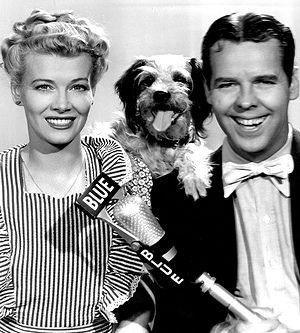
Penny Singleton as Blondie & Arthur Lake as Dagwood Bumstead!, the bumbling husband of "Blondie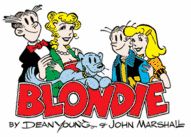
Blondie & Dagwood Bumstead!". Next to Arthur is Patricia the bride in a glorious silk wedding dress.
Arthur Lake had been on one of the Hearst's summer tours and had become a friend of Jack Hearst and was thrown together with Patricia. Marion and W.R. had a way of throwing people together like that. At one of their famous dinner parties they seated Winston Churchill across from the Marx brothers. I would have killed to be a fly on the wall that night. Patricia and Arthur were funny, kooky and even a little childish. They were also sweet and somewhat oblivious. It didn't take long for the two to find each other and they would be together for the next 50 years, through thick and thin, richer and poorer. All in all, a good match.
This year (1937) Marion is about to retire from pictures and has sold off her personal real estate, furs and jewelry for over a million 1937 dollars and given it to William Randolph to help bail out the Hearst empire. Marion sold her Beach House at 415 Pacific Coast Hwy. in Santa Monica. Designed by Julia Morgan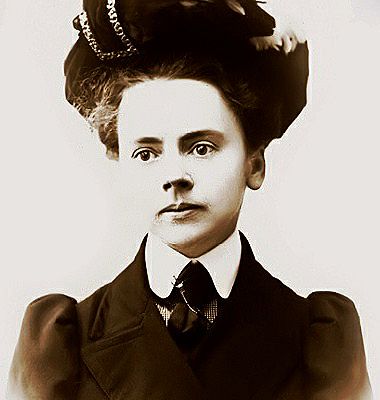
She designed Marion’s Beach House and was the architect for Hearst Castle the first woman architect licensed in California! and built for Marion by W.R. boasting 118 rooms, 55 bathrooms, 37 fireplaces, some over 250 years old, a gold room furnished in gold leaf, real crystal chandeliers from Tiffany's, a ballroom from a 1750 Venetian palazzo, downstairs in the basement a real Elizabethan British public house that seated 50, complete with a bar. Her house was demolished in June of 1956.
Marion will spend 36 years of her life as William Randolph’s mistress and companion until he passes away in 1951. Only then will she marry for the very first time. It would be just 11 weeks after William Randolph passed away on that year’s Halloween night. Eloping to El Rancho Vegas feeling alone, desperate, afraid and so drunk someone had to hold her upright long enough to say “I Do”, she finally became a bride at the age of 54. Marrying Horace Brown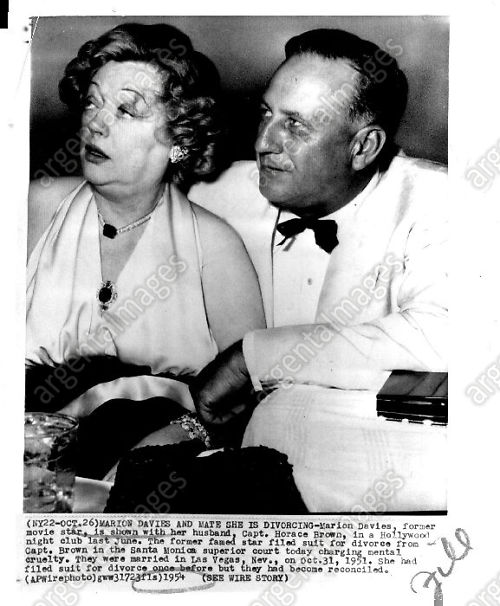
Beautiful Marion fell apart after W.R. passed away!.
But on this warm July day in 1937, the bride Miss Patricia Van Cleve is the center of attention. Nobody really knows where Patricia comes from. She was not born here at San Simeon but perhaps in France, or just down the coast in Santa Barbara or even New York. Marion has pretty much raised her from infancy traveling between Marion’s beach house in Santa Monica, up here to “The Ranch” in San Simeon and to the Ritz Tower or The Warwick in New York.
Patricia is Marion’s niece and would travel with Marion and W.R. on European tours in the summers becoming a permanent part of the Hearst entourage which included some of his five sons and their wives, Marion’s sisters and their children, a few business associates and of course the nurses, governesses, maids and valets creating a very impressive long line of people, auto’s, luggage and meals that any Hotel would love to see coming.
Many years later before she passed away Patricia would say that W.R. telephoned her on that wedding day from one of the guest houses and asked her to see him in his private rooms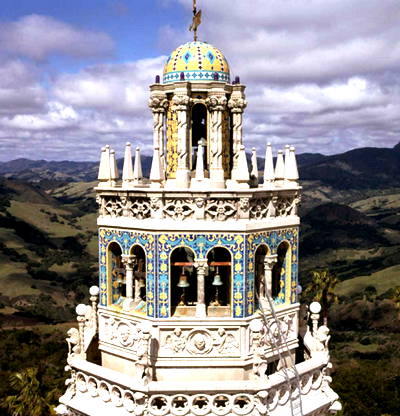
See the balcony surrounding W.R.’s private bedroom just below the bells! just below the bell towers of the castle. She was in awe of W.R. and called him "the Chief"....
"So I went up to his room and he said to me '...You know I'm your father...' I said yes I know, he said: '...this is a secret between the three of us...' again I said yes and gave him a kiss on the cheek and he said: '...I have to go wake up Marion now. See you later...' and that was all there was."
That was the secret between Paticia, Marion and W.R. and would remain secret until the day she died and her son, Arthur Patrick Lake, made it public. The Palm Springs Desert Sun ran a huge spread complete with pictures entitled "Their Greatest Secret" (Oct 13, 1993). The Los Angeles Times picked up the story and ran a more skeptical article in Oct., of 1993 (CLICK HERE). Things eventually started to die down as there was no actual hard evidence unless permission to exhume bodies and run DNA testing was given. There were no birth certificates, record of births or even a mention of the birth in W.R. or Marion's personal papers and the Hearst family refused to make a comment of any kind.
Patricia said she was 11 when Marion came upon her sitting by the Neptune Pool a bit lonely and rather bored. Marion sat down next to her dangling her feet in the pool and told her the whole story and that she wasn't really the daughter of George Van Cleve, an Arrow Shirt Model, and Marion's promiscous sister Rose, but that she had been born secretly in France to Marion in a chateau or private hospital of some sort. She said when Marion brought her back to New York that W.R. had the birth certificate faked so the unmarried Marion and W.R. could explain the presence of this child.
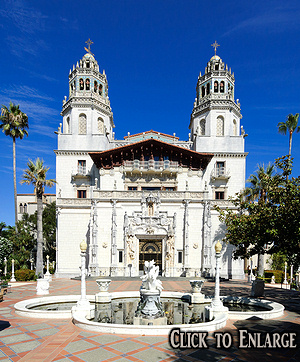
But today is her wedding day so forget about all that other stuff! There may be a depression going on outside these walls but in here it's still the roaring twenties and the people are beautiful. There is a huge dinner prepared for all the guests in the dramatically dark dining room with all the tapestries, choir stalls and rows of gorgeous silk flags from Siena Italy hanging from the ceiling. Patricia and Arthur change clothes in their room and walk out the west entrance where a pair of sculpted stone saints flanks the doorway. Click the picture on the right to enlarge and examine the detail.
The sun was brilliant that day and the couple was surrounded by the fabulous landscaping of fruit trees - tangerines, lemons and oranges. There were colored tiles, tall Mexican fan palms, sun drenched purple bougainvillea. There were zoo animals, milky statues like "The Three Graces", a stable for horseback riding. Surrounded by smiling friends and family as the breeze brought the sweet smell of jasmine wafting inside the house. W.R. and Marion watched over Patricia and wanted her to be happy. Despite everything you may have come to believe from watching Orson Welles dark noir movie 'Citizen Kane', they were really very bright, upbeat, unconventional, creative, fearless and very independent people. The dark gloomy forbidding castle named Xanadu in the movie was nothing at all like the bright sun drenched "La Cuesta Encantada" (The Enchanted Hill).
Arthur and Patricia began their honeymoon by driving up the California coast highway along some of the most beautiful scenery in the country. Carmel, Monterey, Santa Cruz, San Francisco and continued north almost to Oregon. Secluded and quiet they arrived at another huge Hearst owned property in the style of a Bavarian village named 'Wyntoon'. Located near Mt. Shasta and very private, it was easy to become bored and a little stir crazy (Before DVDs, the internet, TV's etc.). The nearby quiet rural town of McCloud was boring and the household servants were far from entertaining so they started inviting their friends up as they partied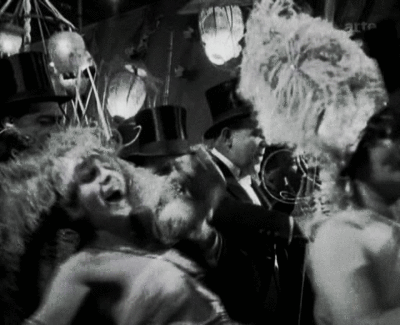
Like a party from The Great Gatsby, Arthur and Patricia lived a hedonistic life! in a life of the latest fads, fashion, styles and social gossip.
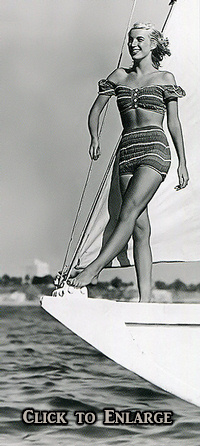
This was pretty much how they lived for years and years. When their two children arrived, Arthur Patrick and Marion Rose, they became just another part of the lifestyle too. A subset of the Hearst entourage a group of 'pals' and idle family members wandering from place to place, from the beach to the desert, from Sacandia to the Del Mar racetrack. For several years after their marriage the Lakes simply lived with "Aunt Marion" at her huge Santa Monica 118 room beach house. Arthur and Patricia lived a life of the idle rich very much like the F. Scott Fitzgerald characters 'Daisy Buchanan' and 'Tom Buchanan' leading beautiful but pointless lives in The Great Gatsby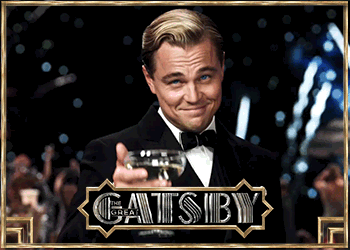
Leonardo DiCaprio playing Jay Gatsby in the 2013 release of The Great Gatsby!. Eventually they were given a house and staff of their own.
Patricia was a long stemmed beauty as you can see from the 1950 photo on the right as she proudly stood on the bow of her sailboat named 'Blondie' in Santa Monica Bay. In 1938 Arthur Lake found a job and the 'Blondie' movies began. Here's a sample of Arthur Lake playing Dagwood Bumstead (CLICK HERE) in 1938.
They were light funny very successful films and Arthur was in much demand for personal appearances around the country. The gang would all gather at the Lake's new 30 room Spanish style house just off San Vincente Blvd. in Santa Monica for rehearsals. The cast and crew would come and stay for days and days. Nobody was ever turned away. Arthur's sister Florence
Florence was also a beauty and played in the 1930 release of ‘Romance’ with Greta Garbo! and her family had already moved into a huge apartment over the garage which was to become problematic later on.
Marion's family were outrageous and shocking. They were hilarious and sometimes maybe even a little disgusting. Irish & maybe some Dutch and/or French and Catholic. There were so many Douris girls it was hard to keep them straight. Ethel and Reine and Rose and Marion were all dancers under the stage name Davies, and all hoped to get into the 'Follies'. They all lived in a tiny little house near Gramercy Park in New York City. Their father, being a good Irish man, was a drinker and a gambler and couldn't take all the raging rivers of estrogen so had a separate residence.
Right from the beginning W.R. showered Marion with gifts and baubles. When Marion was 15, she told her mother, Rose, that she wanted to go on the stage. A common enough pursuit in those times for a young woman and that she hated convent school. When Marion turned 18 and started seeing a 52 year old married man named W.R. Hearst why should dad, 'Papa Ben' (Bernard Douras) interfere? This W.R. Hearst man seemed respectable enough fellow and declared his intentions of being in love with Marion and would marry her if he could, if only his wife would give him a divorce. What could possibly go wrong?
W.R. followed Marion around buying rings, watches, and any bauble that caught her fancy while sending her love letters when he couldn't be with her. She kept them all and slowly started to return his affection. W.R. thought big, scale is what made W.R. different than other men, and he had the means to make it happen. In 1917 Marion was a tender lively 18 years old and W.R. at 52 was building his empire and in hot pursuit of Marion.
During this period W.R. was twice elected as a Democratic Representative to Congress and ran unsuccessfully for Mayor of New York City in 1905 and 1909. Much of the coverage leading up to the Spanish American war, beginning with the outbreak of the Cuban Revolution in 1895, was tainted by rumor, propaganda, and sensationalism, with the “yellow” papers regarded as the worst offenders. Indeed, Hearst's 'Journal' and other New York newspapers were so one-sided and full of errors in their reporting that coverage of the Cuban crisis and the ensuing Spanish-American War are often cited as low points in the history of the American press.
While Hearst and the yellow press did not directly cause America's war with Spain, they did inflame public opinion to a fever pitch, which was a major influence in Pres. McKinley's decision to use force against Spain. Furthermore, Congressmen and other public officials of the time received most of their information from newspapers, and the Journal, the World, and the more respectable New York Herald had by far the most informative, extensive, and influential coverage.
By the 1920s and 1930's, W.R. had the biggest media conglomerate in the world. Apart from having highly-circulated magazines like Cosmopolitan, Town & Country, Esquire, House Beautiful, Harpers Bazaar and many others he owned 28 newspapers in 18 major cities from coast to coast (many of them under either the American or Examiner banners) read by one out of four Americans each day, Hearst also began acquiring radio stations to complement his papers. In 1929 W.R., along with movie studio MGM created Hearst Metrotone News to produce newsreels shown in movie theatres filled with news footage shot around the world, and in 1947 he produced an early television newscast for the Dumont Television Network becoming the owner of one of the first television stations in the country, WBAL-TV in Baltimore.

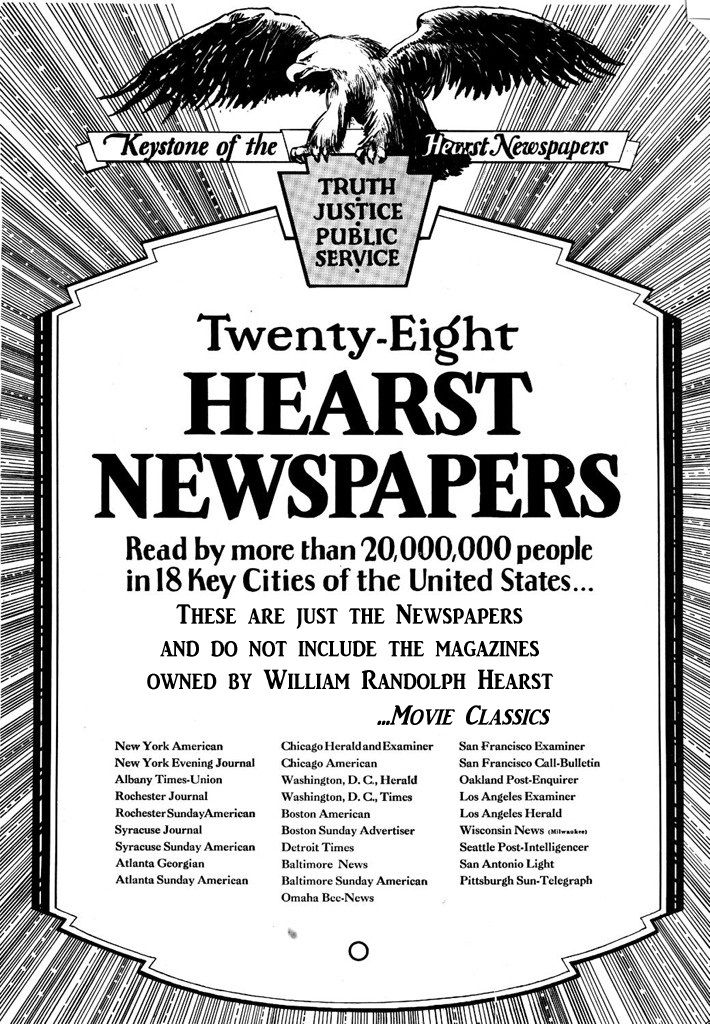
Scale! W.R. was all about scale, so when he decided to make his 18 yr. old paramour a glamorous Hollywood star, he pulled out all the stops. First he would finance her silent movies and then promote her with 28 newspapers and numerous magazines at his disposal, the campaign began. Marion was not without talent or charm as Susan Alexander portrayed her as a screeching soprano in 'Citizen Kane' and even Orson Welles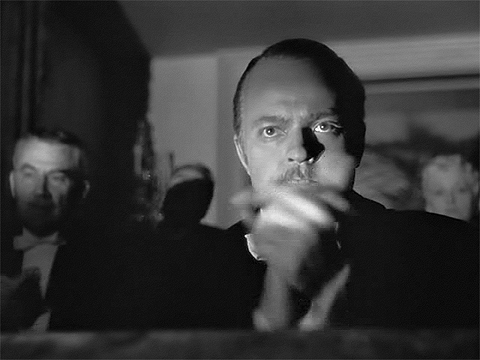
This scene from Citizen Kane showing Orson as W.R. Hearst! finally had to admit that. The support and backing that W.R. gave Marion was "less of a favor than might appear" Orson wrote in the forward to 'The Times We Had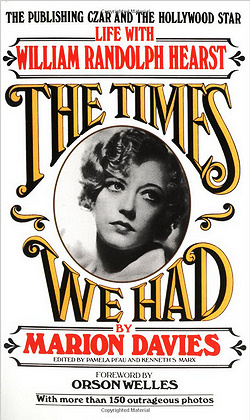
Note the Forward here written by Orson Welles!', Marion's memoirs. "That vast publicity machine was all too visible, and finally, instead of helping, it cast a shadow - a shadow of doubt... This question darkened an otherwise brilliant career".
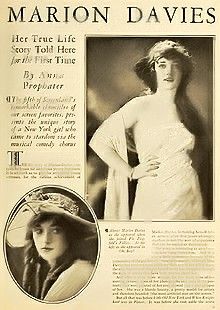

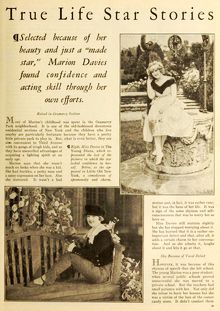
W.R.'s first obsession was of course the building of San Simeon but his second was Marion. Context is everything when trying to understand the past. The social view of women in general was much different than today. True, women were 'objectified' but you can't say that's entirely a bad thing. Being placed on a pedastel, indulged, admired and every whim catered to almost as a parent to a precocious child does have a certain appeal. There was something wild about Marion, reckless and unpossessable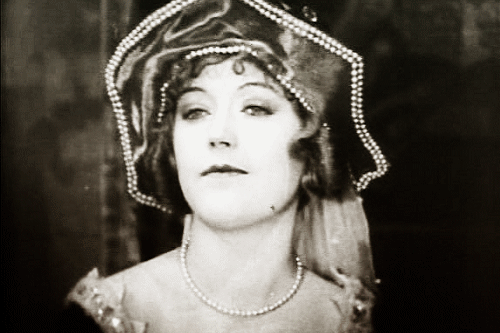
This scene from ‘When Knighthood Was In Flower’ (1922)!. W.R. spent his life trying to control her. True, W.R. was her lover, but he was also her agent, her producer, her father, her brother, and when her mother passed away in 1928, he said to Marion "I'm awfully sorry... May I be a Mother to you?". Orson also wrote: "...theirs was truly a love story. Love was not the subject of Citizen Kane...".
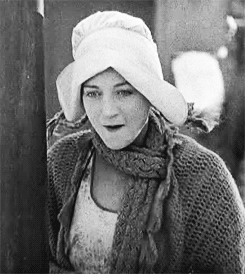
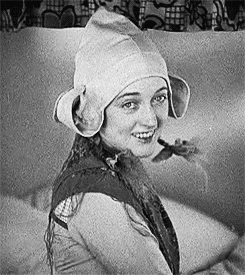
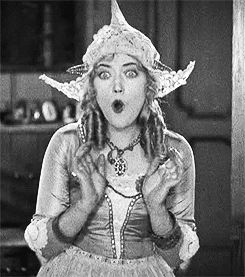

There was no shortage of young women that W.R. could have chosen. Here is picture of Hearst's personal movie theater at 'The Ranch' which could have been taken on almost any weekend showing a bevy of young Hollywood starlets thrilled to have been invited...

They could have been watching 42nd Street with Ruby Keeler or even Ginger in Golddiggers of 1933.
Marion's sister Reine, who was divorced from theatrical producer George Lederer came to California with her children. Charles (who would write the screenplay for 'His Girl Friday') and Pepi (drug addicted at 25yrs old jumped from a window of Good Samaritan Hospital in 1935 and died instantly), and stayed for years. There was Marion's promiscuous sister Rose, who was married six times and enjoyed countless men along the way, including a 10 year affair with Washington newspaper publisher Edward Beale McLean and a notable fling with Japanese actor Sessue Hayakawa.

It seems Rose was the wildest of the sisters and inebriated most of the time. To the public she was the official mother of Patricia Van Cleve. Fred Guiles, biographer wrote a book entitled "Marion" in 1969 and speculated then about Patricia being the daughter of Marion instead of Rose. Ever since the 20's there have been stories and rumors about Marion's 'Love Children' - the cook's daughter at San Simeon was supposedly hers, the French actress Simone Simon was another possible child.
While Patricia says she did indeed love "Mama Rose" she also claims there was always the danger of Rose's getting drunk and revealing the truth and Marion's career could not have survived yet another humiliating public scandal. W.R. and Marion were very careful to watch over and take good care of Rose and keep her close. Rose wound up with her very own house in Bel Air. George Van Cleve, one of Rose's many husbands and publicly Patricia's father was given well paid easy jobs in the Hearst empire. George ran off several times with Patricia between 1925 and 1930 and fought for legal custody on the grounds of Rose's promiscuity and drunkedness. Patricia said it was because he wanted ransom and he didn't really do it to protect her.
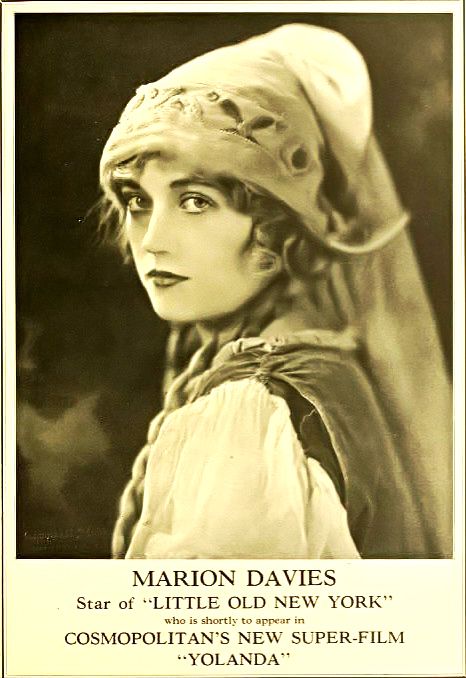
Rose frequently called Patricia in the middle of the night, drunk and crying about one thing or another. When George Van Cleve suffered a series of strokes, Patricia took him in giving him a bedroom suite in back of San Vicente house until his death in 1949. When W.R. began having serious heart problems and moved into a house on North Beverly Dr. with Marion, Patricia kept her company while Marion stood by his bed for the next four years as W.R.'s health continued to fail. Near the end W.R. was wheelchair bound and kept the house at a sweltering and stuffy 80 degrees. By then Marion was a hopeless alcoholic. Patricia spent nearly every day with them, but it wasn't until W.R.'s death in 1951 that she realized her actual status inside the Hearst empire, she was nobody.
Movie Classics

Click Pic Above for Main Menu
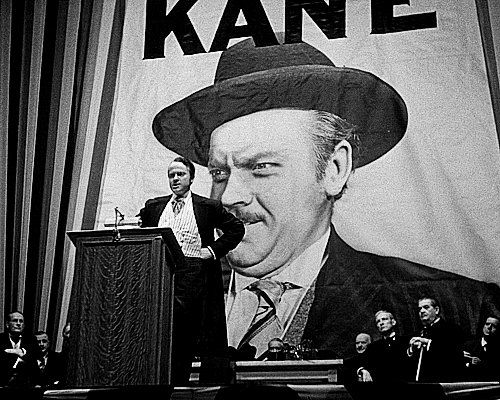

No comments:
Post a Comment